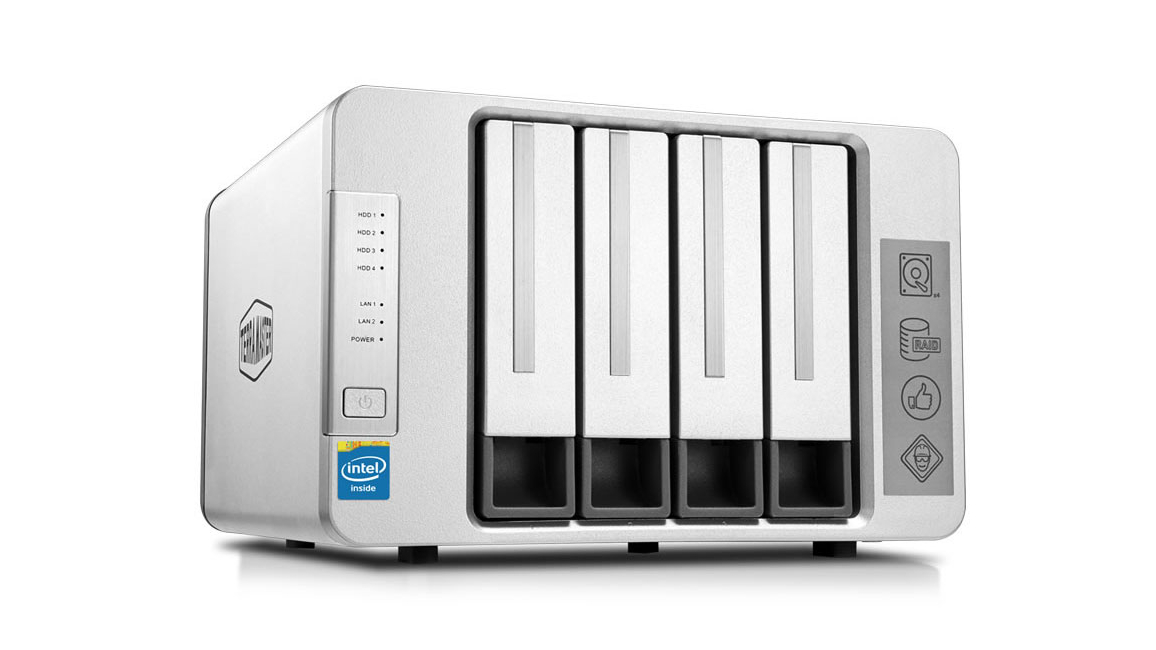TechRadar Verdict
Solid hardware design and construction can’t overcome the lack of attention given to the TOS NAS operating system and applications. Poor documentation, limited apps, and CPU power that is difficult to utilize are all issues here.
Pros
- +
Strong enclosure
- +
Powerful platform
- +
Quiet
Cons
- -
No drive locks
- -
Limited app selection
- -
Poor app support
Why you can trust TechRadar
Last year we reviewed the TerraMaster F2-220, a dual-drive NAS that offered plenty of computing power, but needed to enhance the software side of that proposition.
Given the TerraMaster numbering convention, it would be easy to assume that the F4-420 is merely a four drive version of the F2-220. And in some respects that isn’t far from the truth. Let’s take a more detailed look at this NAS solution which is priced at $460 or £400.

Design
The appearance of the F4-420 is something that you’ll either like or hate, but it’s consistent with the TerraMaster range of NAS boxes and its passion for rounded silver surfaces.
Essentially, it’s a metal and plastic construction that feels robust even if it doesn’t break any new ground in terms of style or imagination.
On the front of this unit are four vertically mounted 3.5-inch drive bays, an array of LED indicator lights and the power button. Around the back are two USB ports (one USB 3.0 along with a USB 2.0 connector) and dual Gigabit Ethernet LAN ports. There are also two 80mm fans at the rear to keep the contents cool, and power input for a laptop-style PSU.
In our previous F2-200 review, we commented about the lack of locks on the drive bays, inviting their accidental unlatching. And that remains unchanged here, sadly.
In the packaging, along with the F4-420 is a box that contains the PSU, power cables, a single Ethernet cable, and a screwdriver to use with a selection of drive mounting screws.
It is possible to install 3.5 and 2.5-inch mechanisms, allowing for 2.5-inch SSDs along with conventional spinning platter-based storage. However, you can’t allocate an SSD as a cache for conventional drives, unfortunately.

Specifications
For those with four 12TB hard drives handy, there is the potential for 48TB of storage in the F4-420, but only if you’re willing to decline any form of resilience to drive failure. Using a RAID 5 configuration a whopping 36GB of usable space is available. Or 24TB if you decide to use a RAID 1 mirror instead.
On the TerraMaster specification page it proudly proclaims that instead of using an ARM CPU, the F4-420 has been blessed with a quad-core 2GHz Intel Celeron (J1900) along with 4GB of DDR3 memory.

Curiously that’s a lower processor clock than the F4-220, which sported a 2.4GHz Intel J1800. Also worth noting is the fact that the 4GB of RAM on this system can’t be user upgraded.
The critical difference is that the J1900 is a quad-core processor, whereas the J1800 is dual-core. And that’s the only significant difference between the F4-420 and it’s 30% cheaper F4-220 cousin.
The increase in CPU power has little impact on the speed of reading or writing across the network, so what can the F4-420 do with that extra performance?
Mark is an expert on 3D printers, drones and phones. He also covers storage, including SSDs, NAS drives and portable hard drives. He started writing in 1986 and has contributed to MicroMart, PC Format, 3D World, among others.

